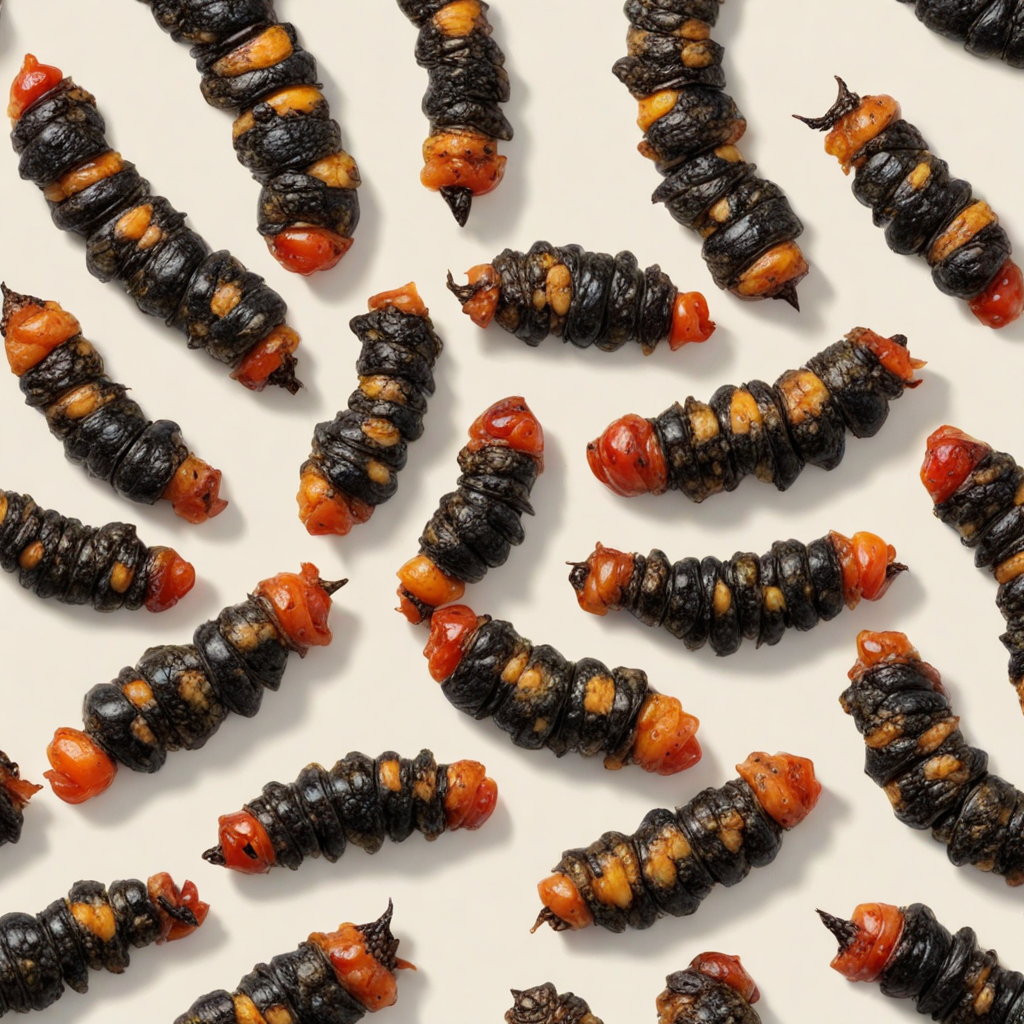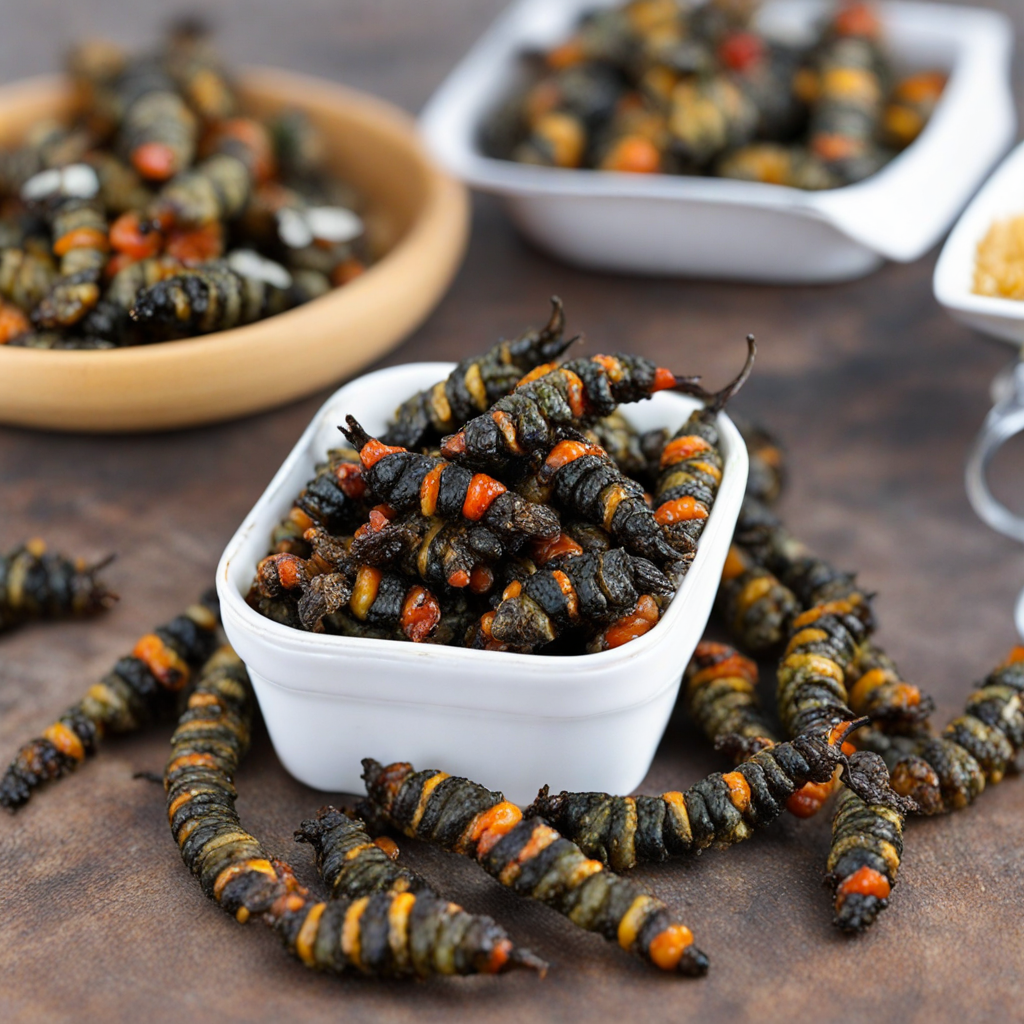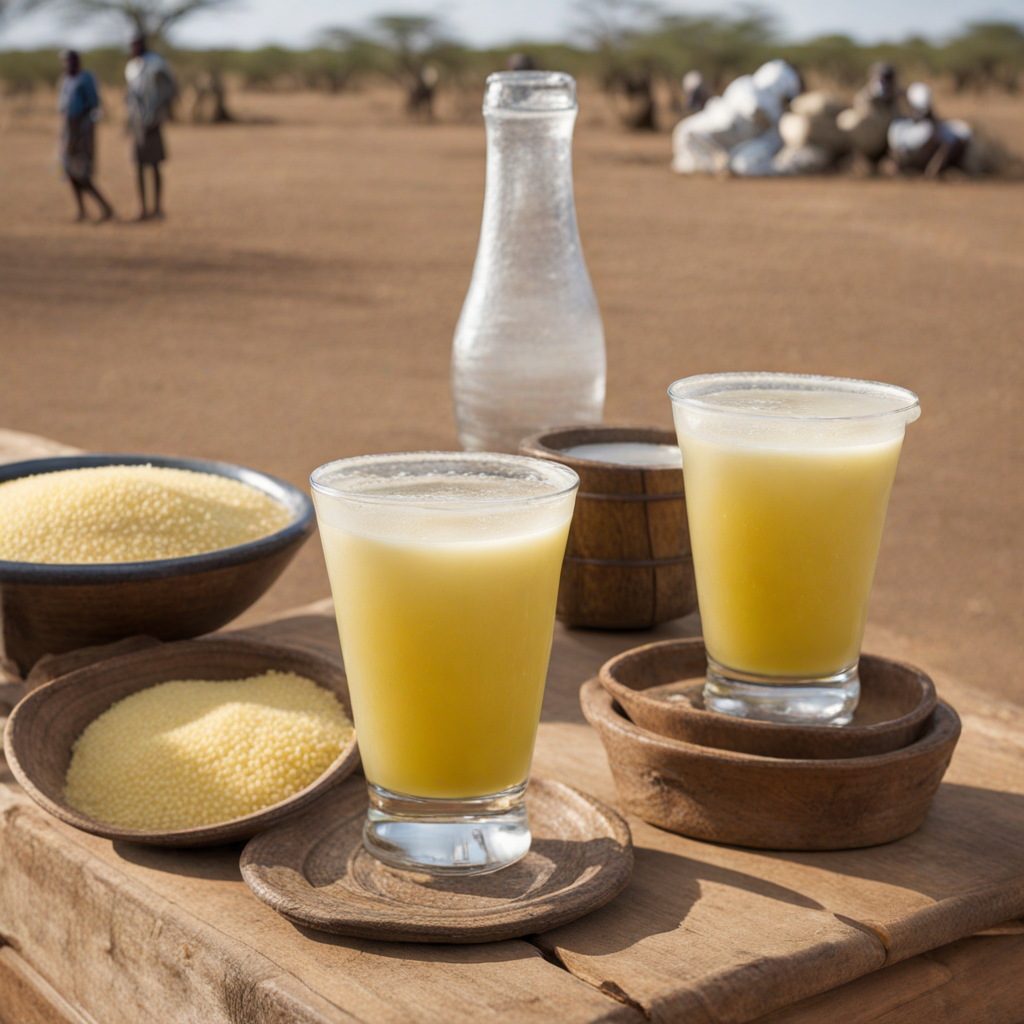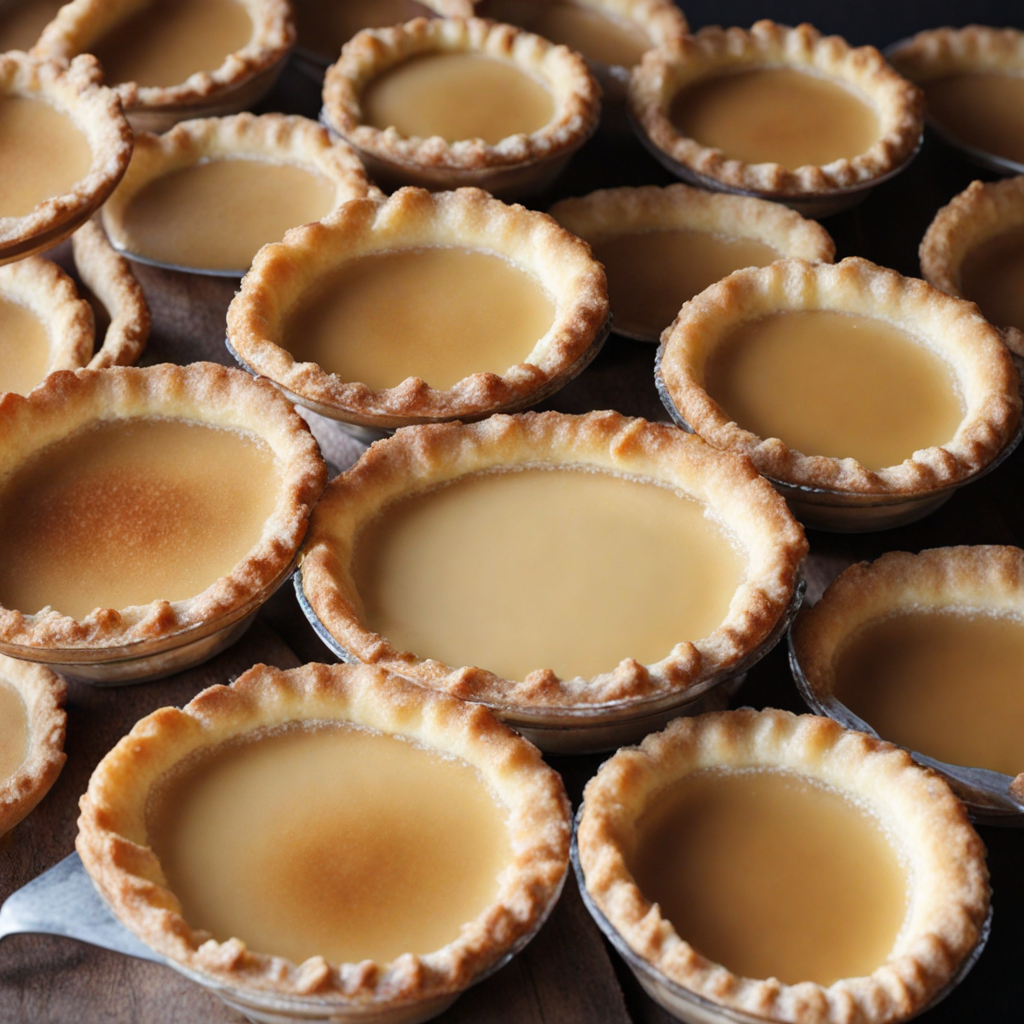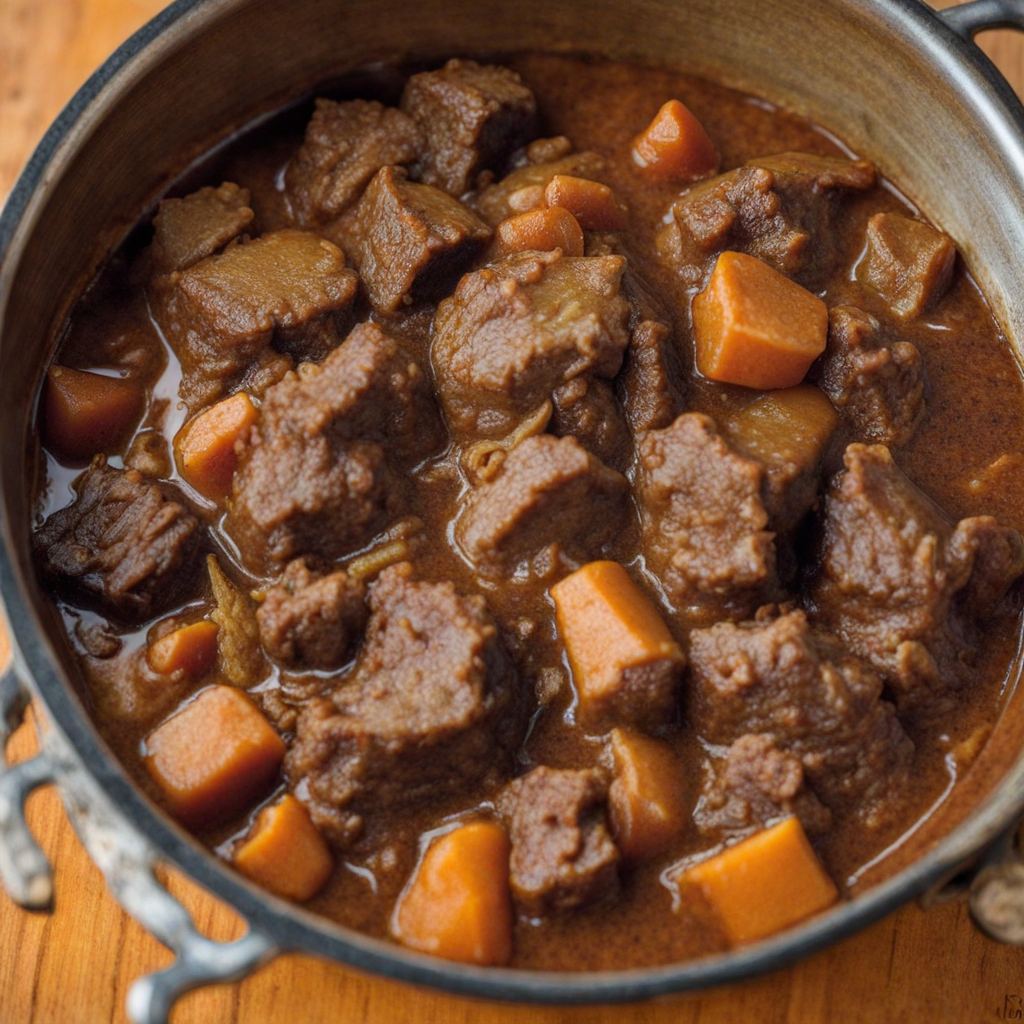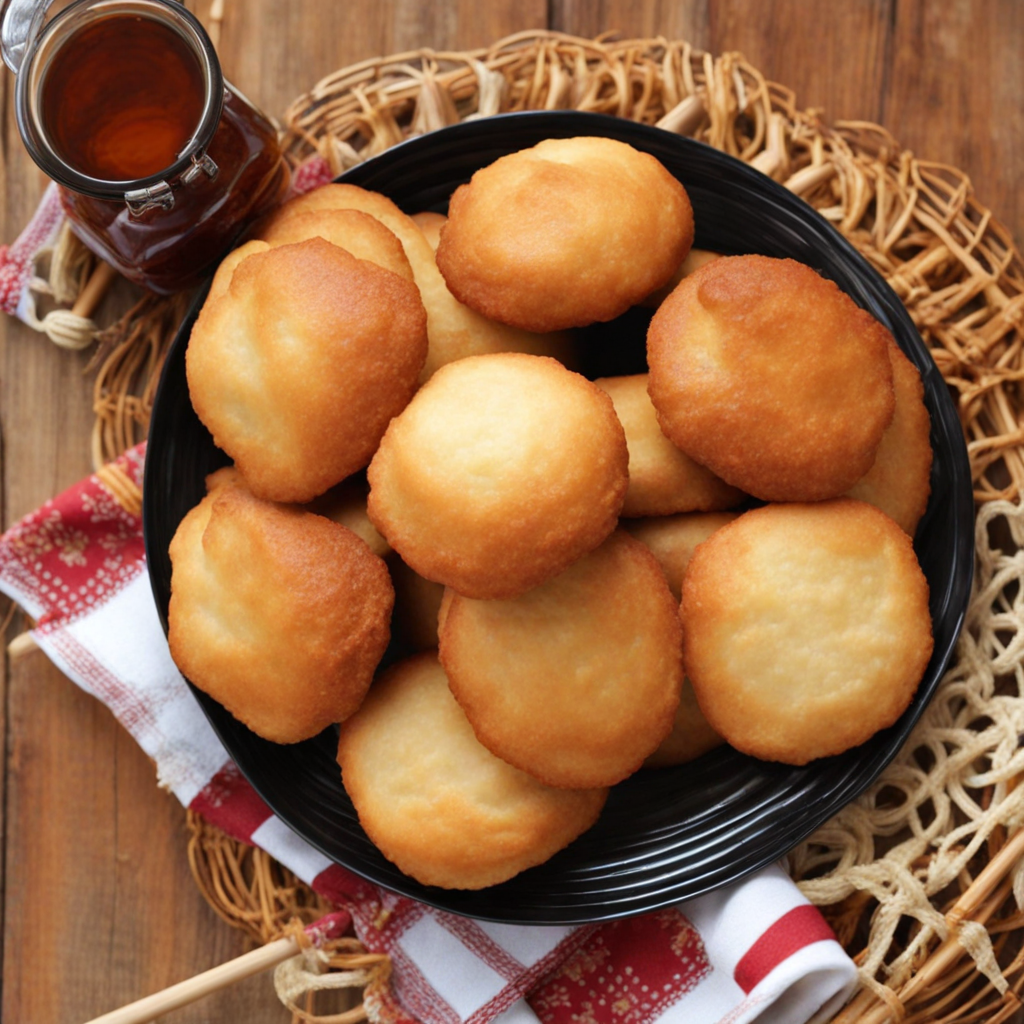Mopane Worms
Mopane worms are a unique delicacy in Botswana, celebrated for their rich, earthy flavor and distinctive texture. These edible larvae, which are the caterpillars of the Mopane moth, are typically harvested in the wild and are a staple in many local diets. When prepared, they exhibit a slightly chewy consistency, reminiscent of dried fish or jerky, with a nutty taste that can be quite addictive. Often enjoyed as a snack or incorporated into various dishes, Mopane worms provide a hearty protein source that has sustained communities for generations. To enjoy Mopane worms, they are usually sun-dried and then rehydrated before cooking. Traditional methods involve frying them until crispy, seasoning them with spices, or adding them to stews and sauces, allowing the flavors to meld beautifully. The dish is frequently complemented by staple sides such as maize porridge or vegetables, making it a versatile and nourishing meal. The preparation process brings out a depth of flavor, enhancing the worms' natural umami notes and creating a delightful culinary experience. In addition to their taste and texture, Mopane worms carry significant cultural importance in Botswana and neighboring regions. They are often harvested during the rainy season, symbolizing a connection to the land and the cycles of nature. For many, indulging in Mopane worms is not just about the flavor but also about embracing tradition and community. With their unique taste profile and nutritional benefits, Mopane worms offer adventurous food lovers an opportunity to explore a different aspect of African cuisine.
How It Became This Dish
The History of Phane: A Culinary Tradition from Botswana #### Origins of Phane Phane, also known as mopane worms, are the edible larvae of the Emperor Moth (Gonimbrasia belti). This traditional delicacy is primarily found in Botswana and other Southern African nations, where the mopane tree (Colophospermum mopane) thrives in arid regions. The gathering of phane has been an integral part of local diets for centuries, reflecting a deep-rooted connection between the people and the land. The consumption of phane is believed to date back to ancient times, when the indigenous San people first discovered the nutritional value of these larvae. These early hunter-gatherers utilized foraging techniques to harvest the larvae during specific seasons, aligning their eating habits with the natural cycles of the mopane tree. This practice has been passed down through generations, becoming a cornerstone of culinary heritage in the region. #### Cultural Significance Phane is not merely a dish; it embodies the cultural identity of the people in Botswana and surrounding areas. For many communities, particularly the Bakgatla, Bakwena, and Basarwa (San) tribes, phane represents a link to their ancestral traditions and is a source of pride. The harvesting of phane traditionally takes place during the rainy season, typically from December to March, when the larvae are most abundant. During this time, families come together to collect and prepare phane, reinforcing social bonds and communal ties. In addition to its role in community and family life, phane plays a significant part in local economies. The harvesting and selling of phane provide a source of income for many rural households. Markets bustling with vendors selling this delicacy demonstrate its economic importance. The trade of phane extends beyond Botswana’s borders, with exports reaching countries like South Africa and even as far away as Europe and the United States, where it is sought after as a source of protein. #### Nutritional Value and Culinary Uses Nutritionally, phane is a powerhouse. Rich in protein, fat, and essential vitamins and minerals, these larvae are a sustainable food source in a region where food security is often a concern. The high protein content of phane provides an alternative to traditional livestock, which can be resource-intensive to raise in arid climates. Consequently, phane represents a sustainable choice for many households. Culinary-wise, phane can be prepared in numerous ways, showcasing the versatility of this ingredient. Traditionally, the larvae are harvested, cleaned, and then dried or smoked. Dried phane can be cooked into a stew, added to porridge, or simply fried and enjoyed as a crunchy snack. The flavor profile is often described as nutty and earthy, enhancing various dishes. In recent years, innovative chefs have begun to incorporate phane into contemporary cuisine, creating gourmet dishes that elevate this humble ingredient to new heights. #### Development Over Time As Botswana has evolved, so too has the role of phane in society. The advent of modernity and globalization has influenced the ways in which phane is harvested and consumed. While traditional harvesting methods remain prevalent, some communities have adopted more industrialized approaches, increasing efficiency and output. This shift has raised questions about sustainability and the preservation of traditional practices. In response to these concerns, there has been a renewed interest in promoting the sustainable harvesting of phane. Various organizations and NGOs are working to educate communities about sustainable practices while ensuring that the gathering of phane continues to support local economies. These initiatives aim not only to protect the environment but also to preserve the cultural significance of phane as a vital part of Botswana's heritage. Additionally, the push for food security in the face of climate change has brought phane back into the spotlight. As traditional livestock farming faces challenges due to changing weather patterns, the emphasis on edible insects, including phane, has gained traction. Scientific research is increasingly highlighting the potential of insects as a viable protein source, prompting a resurgence of interest in traditional foods that have been overlooked in modern diets. #### Challenges and Future Prospects Despite its rich heritage and nutritional benefits, phane faces challenges in the contemporary food landscape. Urbanization and the migration of younger generations to cities have led to a decline in traditional harvesting practices. As a result, the knowledge of gathering and preparing phane is at risk of being lost. However, initiatives aimed at preserving this culinary tradition have emerged, focusing on education and community engagement. Culinary tourism has also begun to play a role in promoting phane, with visitors to Botswana seeking authentic experiences that include traditional food practices. This trend offers opportunities for local communities to share their knowledge and culinary skills, potentially revitalizing interest in phane and ensuring its place in both local and global cuisines. Moreover, as the world becomes more aware of the environmental impact of conventional farming, the sustainable practices associated with phane harvesting are being recognized as part of a broader movement towards alternative protein sources. The promotion of phane as a sustainable food option could lead to increased demand, further integrating it into global culinary traditions. #### Conclusion Phane is more than a food; it is a symbol of resilience, community, and cultural heritage. Its rich history reflects the life and traditions of the people of Botswana and surrounding regions. As the world grapples with the challenges of food security and environmental sustainability, phane stands as a testament to the importance of traditional knowledge and practices. With continued efforts to promote its sustainable harvesting and culinary uses, phane is poised to thrive in both local and global contexts, enriching the diets and cultures of generations to come.
You may like
Discover local flavors from Botswana


